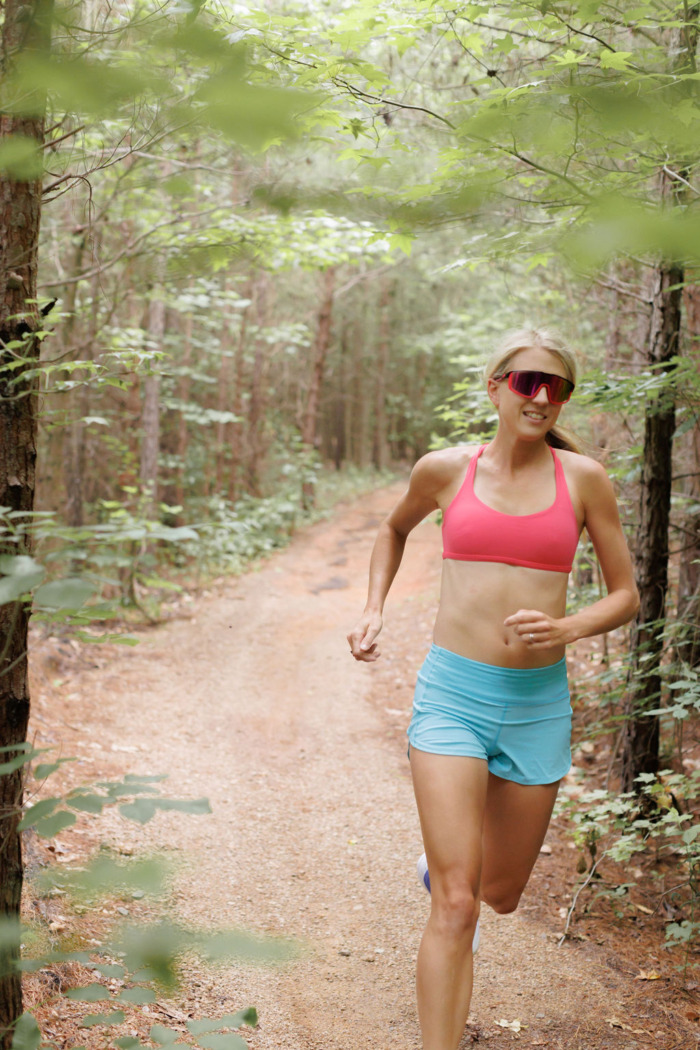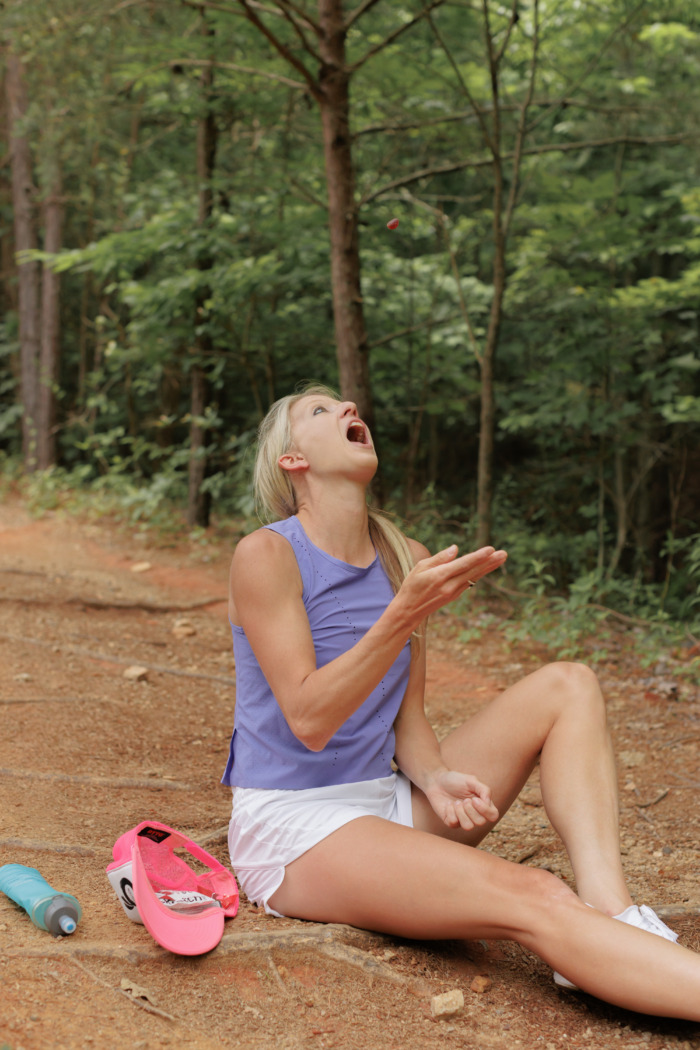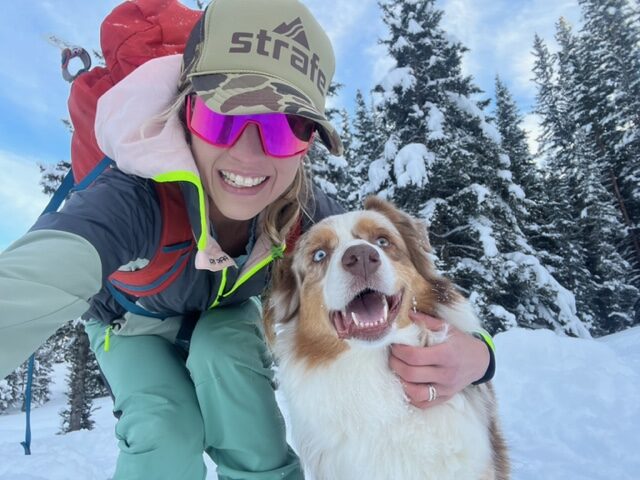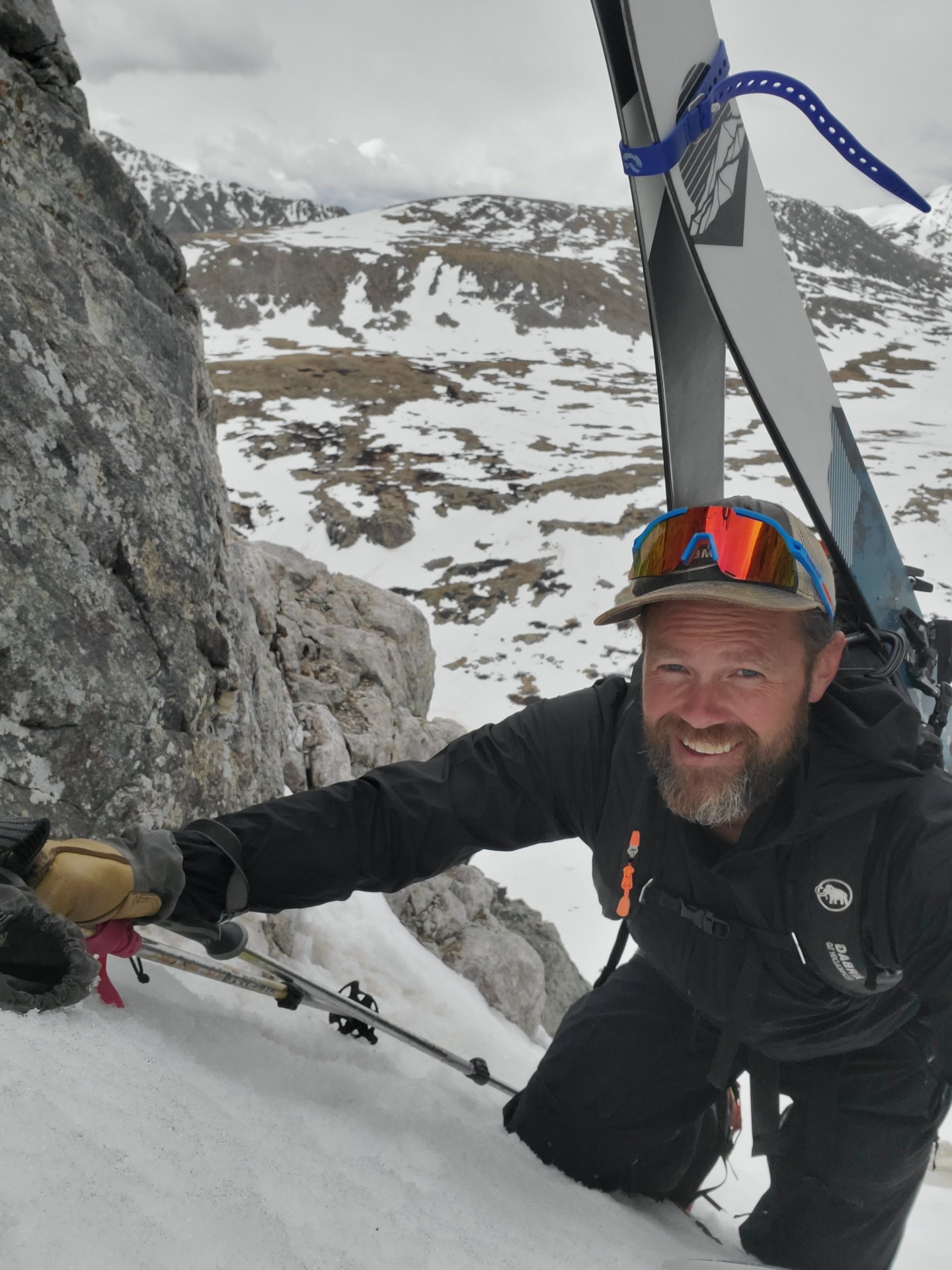For most of us, backcountry skiing is a hobby, an outlet, and an excuse to spend time in the mountains, but if we aren’t professionals and don’t race, we don’t always think of it as a sport. Still, it’s physically demanding and it’s more fun if our bodies feel good doing it.
For some easy ways to think more intentionally about how we fuel our adventures, I spoke with Kylee VanHorn, a Carbondale, CO-based nutritionist who works with a range of endurance athletes–runners, cyclists, mountaineers, triathletes, and ski mountaineers–from recreational to competitive.

VanHorn was a scholarship track and cross-country runner at the University of Richmond, then became a college running coach and worked for Ironman North America putting on triathlons. She earned her Registered Dietitian license in 2018 and has been coaching endurance athletes since then and is continuing her education with study on eating disorders and Functional Medicine.
WS: You work with athletes from several different endurance sports. Do your coaching and plans differ significantly for ski athletes than, say, runners or cyclists? If so, why and how?
KVH: To some extent, yes, but to others, no. Timing and fuel choices for exercise change based on sport but needs for daily nutrition may be similar macronutrient-wise (carbohydrates, protein, fat). A lot of athletes try to over-complicate their nutrition when they don’t even have things like the basics of meal and snack planning dialed in.
WS: Are there things uphill ski athletes in particular struggle with when it comes to nutrition?
KVH: Yes, intra-workout nutrition. (Editor’s Note: “fueling while exercising”) It is inherently harder to let go of your poles and fuel yourself. Plus, all of the logistics around avoiding freezing of fuel sources are difficult to navigate. I also think that many uphill athletes do not recognize and respect the amount of energy they are expending every hour. It is a very taxing sport and requires daily fueling to account for that for performance and recovery.
WS: There’s a spectrum of uphill skiers from folks that get out for a few miles every other weekend to elite athletes who are logging serious mileage on snow almost every day. What changes in regards to nutrition as you move toward the more demanding end of that spectrum?
KVH: Energy expenditure will change based on the volume and intensity of activity. Fueling needs pre-, during and post-activity may also change. It really depends on what the rec athlete’s goals are and what their training looks like. A lot of sports nutrition principles will still apply but be toned down if the athlete is not training as much.

Nutritionist Kylee VanHorn fueling up on the trail.
WS: For rec tourers who aren’t training with any specific goal but are heading out for a casual ski (let’s say 1-3 hours, a few miles, 500-2000 vertical gain) are there simple things they can do with food and drink to have a better experience?
KVH: All exercising people that are going out for an extended period of time (>1 hour in duration) could benefit from taking some nutrition with them. Basics of a fueling plan include fluid consumption, electrolytes, and calories. Intensity does affect needs during exercise so if this is leisurely, then less will be needed (however, this could still be individualized).
Aim for 12-16oz/hr of fluids to start
Electrolyte-wise, focus on sodium and aim for 250 mg per hour
Calorie-wise, carbohydrates will be the easiest to digest for uphill skiing and are the quickest source of energy production. Aiming for 200-300 calories/hr is a good starting point. Depending on intensity, you may be able to tolerate more solid foods at lower intensities (mini muffins, bars) vs. higher intensities (you may want to consider hydration mixes with calories as well as sports gels, food blends). At lower intensities, you may be able to digest a little bit more fat and or protein, but this will be highly individual.
WS: You said many athletes overlook the fundamentals when it comes to nutrition. What are those basic things people should focus on getting right before they get lost in the details?
KVH:
Planning and Shopping Process Needs to be Dialed: I suggest starting with 3 meals and 1-3 snacks as a baseline for fueling .
Focus on balance at meals and snacks: For meals, aim to try and have a protein source, carb source, fat source and a fruit and/or vegetable at each meal. For snacks, aim for two macronutrients at each snack (carb+protein, carb+fat, protein+fat) which can help you get in more overall nutrition and keep energy levels balanced.
Fuel Your Training: If you want to adapt to your training, avoid injury, and get ready to race, make sure you fuel your training sessions appropriately. That means high-intensity days and longer training days (>90 min) should include some sources of fuel.
Be smart about supplements: Do you really need what you are taking (i.e. do you know what they are doing?) Are you taking Certified for Sport supplements that have been third-party tested for purity?
Pre and Post Workout Fueling: Do you focus on timing and composition for these things? Are you waiting more than 1-2 hours to fuel post-exercise?
WS: What usually brings an athlete to you for help?
KVH: To be honest, it is because they are either:
Confused with all of the information out there and want to be the best athlete they can be.
Have been doing some kind of restrictive diet and feel like crap or that it is not sustainable and want help.
Are so restrictive that they can’t stop thinking about food, are chronically injured or low energy, have gastrointestinal issues and are at the end of their rope when they finally recognize that nutrition needs to be addressed.
WS: When that athlete first comes to you, what’s your process for figuring out where they are and how you can help them?
KVH: All athletes fill out an extensive intake form and have a conversation with them even before we start working together to ensure it will be a good fit for the both of us. The first session is longer and we go through and pick out specific nutrition challenge areas—there can also be insight from bloodwork or health conditions that an athlete is dealing with that can shed light on where we need to focus getting started. For instance with GI issues, I always look at overall energy intake first, then move to other possibilities because under fueling can cause gut dysfunction.

WS: Is there a version of that process for folks who aren’t quite ready for coaching but want to look at their nutrition that they can try on their own?
KVH: This is a tricky question to answer. Some athletes can track their intake on different days of training in a system like Cronometer, but it is difficult to fully trust those programs for needs for endurance athletes. It can give insight into bigger holes in an athlete’s diet though. Athletes can also start focusing on the basics of fueling themselves during exercise (ie 200-300 calories/hr, fluids, and electrolytes) and go from there. But for personalization, that can take some digging and trialing of things.
WS: To outsiders, what endurance athletes eat and drink during races and training seems like the diet of a drunk child or hummingbird. Soda, sugary drink powders, potato chips, gummy bears. You advocate whole foods but also these processed fuels. Help folks understand why both have their place.
KVH: I do think that when it comes to fueling ourselves, it is important to figure out what works for each individual. I also do not advocate for eating processed foods 24/7, but some processed foods can allow for athletes to fuel without digestive distress or get in carbohydrates without added fiber throughout their day on a particularly heavy training day.
WS: In your columns and on social media you take on a lot of misguided nutrition beliefs and practices. Currently, what are your least favorite nutrition myths/fads and why aren’t they helping?
KVH: Honestly, a lot of nutrition myths/fads seem to get recycled often.
For instance, cutting out full groups of macronutrients like fats or carbohydrates is restrictive and even if athletes claim that it isn’t harmful to them, for many athletes this form of restriction can lead to longer-term fixation on foods and disordered eating.
Intermittent fasting is another example of a trend that is ‘hot’ right now. Essentially, it is really a form of calorie restriction and can lead people down the path of disordered eating.
This type of eating can be particularly damaging for endurance athletes that have higher nutrition needs. Again, not saying it can’t be done, but it definitely shouldn’t be promoted as the end-all, be-all.
WS: You’ve also talked about body image and restriction issues that hold back some endurance athletes. The idea that these very fit and thin types would deal with these issues seems pretty counterintuitive, but this is a real issue, eh?
KVH: It is a very real issue in the population. Up to 60% of endurance athletes struggle with disordered eating, eating disorders, and body dysmorphia. There is just so much comparison in these sports and the ideal promoted is that “lighter is always faster” which means that so many feel the need to restrict to achieve the ideal.
WS: What’s your personal go-to food and drink after a big day outside?
KVH: GU Roctane Chocolate Recovery Mix in Fairlife Chocolate Milk with Peanut Butter blended in.
I honestly love pizza or a big bowl of rice, eggs, and avocado with chili sauce.
WS: For people who are interested in hearing more from you and/or pursuing nutrition coaching, where can they find you?
My Website: http://www.flynutrition.org
Instagram: @flynutrition3
What nutrition questions do you have for Kylee? Post them in the comments or email them to us at info@wildsnow.com and she can tackle them in a future article on WS.

Justin Park is the Editor of Wild Snow. In 2009 while living in Hawaii, he got invited on a hut trip in Colorado. He had no backcountry gear, found Wild Snow, read up on backcountry skiing and bought some frame bindings for a pair of G3 Reverends so he didn’t have to buy touring boots. He moved to Breckenridge, CO a year later and today he skis 100+ days a year, most of them backcountry.
